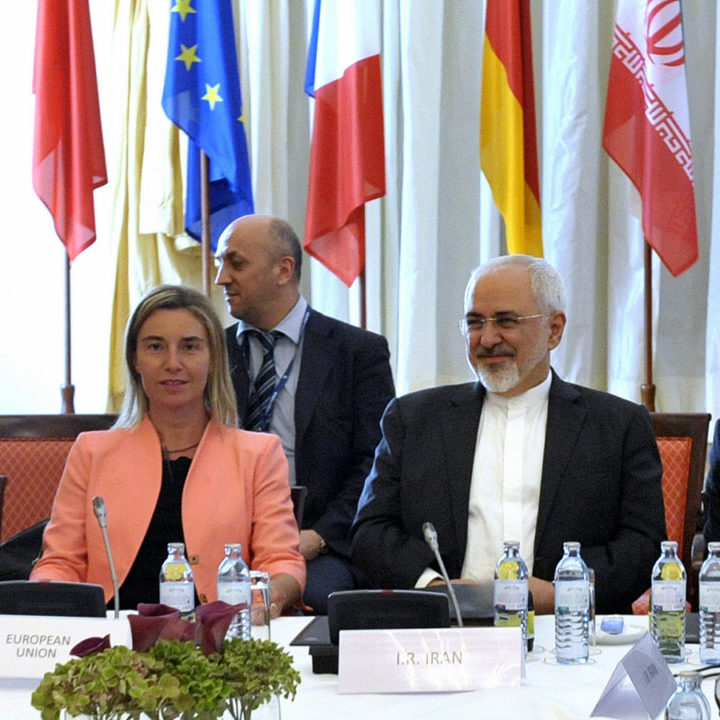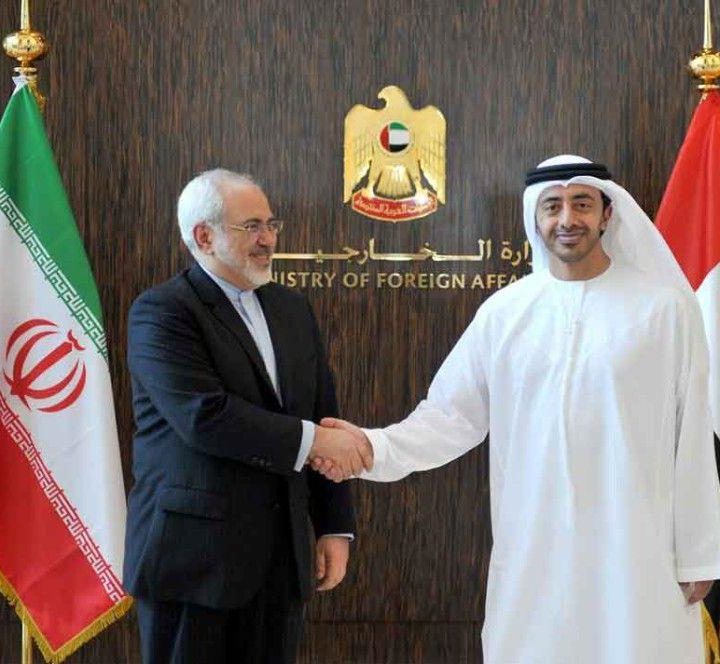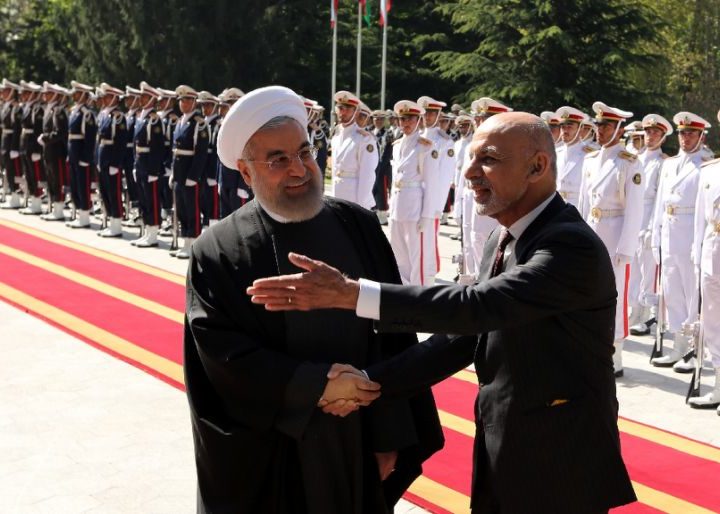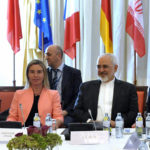Relations between the Islamic Republic of Iran and the Republic of Turkey have been generally peaceful in recent times, but sometimes they have also been strained, slowing trade. Nevertheless, Iran and Turkey are major trade partners and each influences the other, due to their geographical proximity, linguistic and ethnic relations (e.g. Azerbaijanis, a Turkic people, are the second largest ethnicity in Iran). They also share common cultural interests.
Turkey and Iran have in place a preferential trade agreement. There are over 3.7 billion dollars of export trade from Turkey to Iran, including such commodities as: iron, gold, steel, textiles and road vehicles. Conversely, Iran’s exports to Turkey include: raw energy products, plastic products, plus metals and organic chemicals.
Iran is a logical gateway for goods destined for Turkey and E.U. rope from regional partners and elsewhere around the eastern world, as well as commodities from the West, via Turkey destined for the middle east will benefit from strong trade ties between the two countries . Both are committed to increase their mutual trade to a level of 30 billion dollars in the years to come, offering greater trade opportunities for international import-export companies looking to Iran and Turkey to invest or for transit.
| Cities /Towns of > 1M | 2015 Estimate |
| Istanbul |
14,025,646 |
| Ankara | 4,587,558 |
| İzmir | 2,847,691 |
| Bursa | 1,854,285 |
| Adana | 1,563,545 |
| Gaziantep | 1,495,050 |
| Konya | 1,003,373 |
Import and Export Conditions For Turkey
A cross-section of the commodities listed in the 2015 Preferential Trade Agreement between Iran and Turkey include: healthcare products, appliances, textiles, furniture, caviar and tires. As such, these look to be profitable investments for companies seeking safe expansion.
MIT have produced a trade atlas for Turkey which offers information on the categories of products traded and Turkey’s key trade partners. Their information at the time of writing showed the following.
Key Imports of Turkey:
- Cars: 5.2% / $9.84B
- Unspecified: 5.1% / $9.63B
- Refined PetrolE.U. m: 3.9% / $7.34B
- Gold: 3.4% / $6.45B
- Vehicle Parts: 2.7% / $5.09B
Key Exports of Turkey:
- Cars: 6% / $8.32B
- Gold: 5% / 8.25B
- T-Shirts: 2.1% / $2.91B
- Refined petrolE.U. m 1.9% / $2.65B
- Iron structures 1.9% / $2.628B
Key Destinations of Exports
- Germany: 10%
- K.: 8.4%
- Iraq: 5.5%
- Italy: 5.4%
- S.A.: 4.7%
Key Destinations of Imports
- China: 13%
- Germany: 11%
- Russia: 8%
- S.A.: 5.8%
Logistics Issues For Trading With Turkey
In early 2017, the Turkish Grand National Assembly (TBMM) accepted a proposal to establish new border crossings with Iran. As a result, highway border crossings at Dilucu-Maku and Kapikoy-Razi will open up to increase trade and transport between the two countries.
Such moves will reinforce the Preferential Trade Agreement, established between the two countries in 2015.
As there are no visa requirements for Turkish and Iranian citizens to travel in each country, cultural, political and economic relationships are very strong, resulting in a high volume of cargo between the two countries.
In terms of forward logistics planning in relation to seasonality, we recommend always seeking up to date advice from companies such as Tehran Nasim who regularly co-ordinate international transport and logistics projects, including to Turkey.
This being said, Turkey’s climate can vary greatly. For instance, coastal areas of the Aegean and Mediterranean Seas enjoy hot, dry summers with mild to cool, wet winters which are not disruptive logistically. Similarly, the Black Sea coastal areas are also warm in summer, often raining, cold or snowing in winter. The Sea of Marmara, which connects the Aegean Sea and the Black Sea, is likely also to see snow fall almost every winter, however potentially disruptive weather usually lasts only a few days.
In the west, winter temperatures average below 1 °C. Summers are hot and dry; daytime temperatures are often above 30 °C.
Central Turkey has more sharply contrasting seasons, with particularly severe winters in the eastern region. Temperatures of −30 to −40 °C can happen in eastern Anatolia and snow may remain for 120 days of the year. When transport and logistics planning for transit in this region, we recommend speaking to one of Tehran Nasim’s experienced logistics consultants, who can advise on the most favourable route for your products.
Road Networks For Turkey
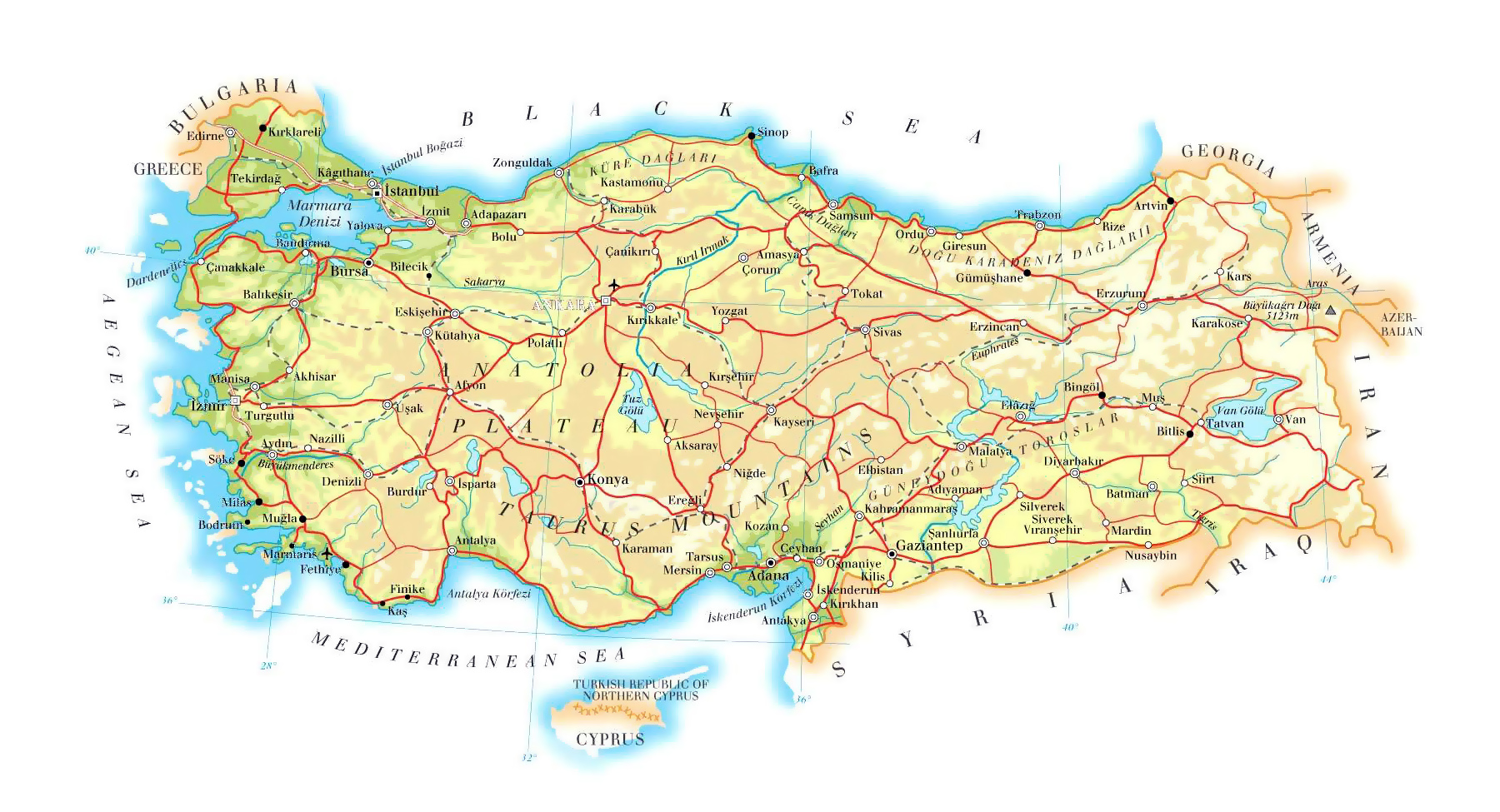
Turkey is also the logical gateway to most E.U. ropean countries. Established truck routes serve the E.U. ropean Economic Community countries from Iran via border crossings located at Bazargan and Razi. The high volume of traffic offers almost daily departures and reduced costs.
Road Border Crossings:
Armenia:
- Akyaka – Kars
Bulgaria:
- Malko Tarnovo
- Dereköy, Kırklareli
- Hamzabeyli, Lalapaşa
- Kapıkule
- Kapitan Andreevo
Georgia:
- Sarpi, Georgia
- Türkgözü
- Vale, Georgia
Greece:
- İpsala
- Karaağaç, Edirne
- Kastanies
- Kipoi, Evros
- Pythio railway station
- Uzunköprü
Iran:
- Çetenli, Doğubayazıt
- Doğubayazıt
- Gürbulak
- Kargakonmaz
- Ibrahim Khalil
- Dilucu-Maku
- Kapıköy-Razi
Turkey’s road network covers 65,623 km. The E.U. rasia Tunnel provides an undersea road connection for motor vehicles running between Istanbul and Asian roads.
A branch of the 3,200 km Trans Turkey Highway (TTH) starts in Gerede, passes through Refahiye, Erzincan and ends at the Iranian border. TTH is connected to road networks of E.U. rope and Central Asia. It is the shortest transit route between Central Asia, Western Asia and Northern Africa. For similar projects, check out Turkey’s government website.
Economic And Social Commission For Asia And Pacific (ESCAP) was founded by the UN Economic And Social Commission in 1974. Turkey’s membership to ESCAP began in 1996, leading to higher level planning of road infrastructure in the country. (See Map 3)
Map 3. Source: http://www.udhb.gov.tr/eng/proje-5-international-road-projects.html
Since 1997, this body facilitates planning of the Road Transportation Corridor Between Central Asia And E.U. rope. In particular three key transit corridors were identified, as follows:
- Northern Corridor; connects Central Asia to E.U. rope via Russian Federation and Ukraine/ Belarus.
- Central Corridor; connects Central Asia to E.U. rope via Caspian Sea, Caucasian countries (Azerbaijan, Armenia, Georgia) and Black Sea, Russian Federation, Ukraine/Turkey.
- Southern Corridor; connects Central Asia to E.U. rope via Iran and Turkey.
Another branch of the TTH starts at the Bulgarian border, passes through İstanbul, Gerede and Ankara, then splits ways, one branch ending at Syrian border, the other at the Iraqi border.
Trans E.U. ropean South-North Motorway Project (TEM)
The Trans E.U. ropean South-North Motorway Project (TEM), is a regional transportation infrastructure project, starting in Poland, reaching Asia and covering Southeast E.U. ropean countries and the Middle East.
This is an international venture including: Austria, Bosnia-Herzegovina, Bulgaria, Croatia, Czech Republic, Georgia, Hungary, Italy, Lithuania, Poland, Romania, Slovakia and Turkey. Sweden and Ukraine are observer members.
TEM road network in Turkey starts at Turkey’s Bulgarian border, passing through Istanbul, via Fatih Sultan Mehmet Bridge. In Ankara it branches eastward and southward. The eastern branch splits once more in Aşkale. One branch reaches Trabzon in Black Sea Region, the other ends in Gürbulak at the Iranian border.
The southern branch ends at the Syrian and Iraqi border. Furthermore, it connects İstanbul to İzmir and Antalya.
Rail Freight Networks For Turkey
The total length of the rail network reaches over 11,000 km. A railway connection between Iran and Turkey has been in place for years. Further links were agreed between Iran and Turkey in February 2017 i.e.: Dilucu-Maku and Kapikoy-Razi.
The Marmaray project links the E.U. ropean and Asian parts of Turkey by rail. 2,133 kilometres of Turkish State Railways infrastructure is electrified, with 457 kilometres of high-speed track. This network includes the Ankara-Konya line, the Ankara-Istanbul line, the Marmaray Tunnel under the Bosporus. This connects the railway and metro lines of Istanbul’s E.U. ropean and Asian sides.
Bridges transition rivers and other geographical obstacles to overland travel, such as the three suspension bridges: Bosporus Bridge, Fatih Sultan Mehmet Bridge and Yavuz Sultan Selim Bridge; these connect E.U. ropean and Asian shores of the Bosphorus strait.
The Osman Gazi Bridge connects the northern and southern shores of the Gulf of İzmit on the Marmara. The planned Çanakkale Bridge will connect the E.U. ropean and Asian shores of the Dardanelles strait.
Ocean Freight Transport Options For Trade With Turkey
With over 25 Iranian port locations, including on coastal ports, Tehran Nasim are situated perfectly to accommodate direct trade between Turkey and Iran, as well as shipping and logistics via Turkey from other areas in the world.
Turkey is extremely well served for sea freight and inter-connectivity of multi-modal transport. For example:
Black Sea Ports:
- Port of Bartın
- Port of Erdemir (aka Port of Karadeniz Ereğli)
- Port of Giresun
- Port of Hopa
- Port of Ordu
- Port of Rize
- Port of Samsun
- Port of Tirebolu
- Port of Trabzon
- Zonguldak TTK Port
- Durusu Terminal,Samsun Province
Also: Bulancak Pier
Turkish Straits and Sea of Marmara Ports:
- Port of Alemdar, Dilovası
- Port of Ambarlı, Istanbul Province
- Akcansa Ambarli Port
- Alemdar Port
- Ambarli Armaport
- Ambarli Mardas Port
- Ambarli Soyak Port
- Port of Bandirma
- Port of Derince
- Port of Diler, Hereke
- Gemport
- Port of Haydarpaşa, Istanbul
- Kumport
- Port of Martaş, Marmara Ereğlisi
- Port of Sedef, Dilovası
- Port of Tekirdag (Akport)
- Port of Zeytinburnu (aka Zeyport)
Turkish Straits and Sea of Marmara Piers:
- Aksa (Akkim) Chemical Plant Pier, Yalova
- Aktaş Chemical Plant Pier, İzmit
- Altıntel Pier
- Bagfaş Piers, Bandırma
- Bortrans (Borusan) Pier, Gemlik
- BP Gemlik Pier, Gemlik
- Camar Installation Pier, İzmit
- Çanakkale Pier
- Çanakkale Cement (Akçansa) Pier, Çanakkale
- Çanakkale TDİ Piers, Çanakkale
- Çolakoğlu Metallurgy Pier
- Elyaf Plant Pier, Yalova
- Etibank Edincik Pier, Bandırma
- Gemlik Pier, Gemlik
- Gübretaş Fertilizer Pier, Yarımca
- İgsaş Fertilizer Complex Pier, İzmit
- Kızılkaya Pier, Dilovası
- Lafarge Aslan Cement Piers, Darıca
- Limaş Pursan Pier, İzmit
- MKS Dolphin Pier, Gemlik
- Mudanya Pier, Mudanya
- Nuh Cement Pier, Hereke
- POAŞ Pier, Çubuklu, Istanbul
- POAŞ-Shell Pier, Derince
- Poliport (Polisan) Pier, Dilovası
- Rota/Korfez Piers
- Tugsas (Nitro Factory) Pier, Gemlik
- Yarımca Piers, Yarımca
Turkish Straits and Sea of Marmara Terminals:
- Aktaş Terminal, Derince
- Aygaz LPG Terminal, Yarımca
- Botaş Terminal, Marmara Ereğlisi
- Çekisan (Mobil-Shell-BP) Terminals, Haramidere, Istanbul Province
- Habas Terminal
- Marmara Botas LNG Terminal
- Petkim Terminal, Yarımca
- Solventaş Terminal, Dilovası
- Total Gebze Terminal, Gebze
- Total Haramidere Terminal, Haramidere, Istanbul
- Tüpraş Tütünçiftlik Refinery Terminal
- Zülfikarlar Molasses Terminal, Yarımca
Aegean Sea Ports:
- Port of Dikili
- Port of Güllük
- Port of Izmir
Aegean Sea Piers:
- Nemrut Bay: Habaş Pier,
- Ege Fertilizer Pier,
- Limaş Pier,
- Nemtaş Pier,
- Çukurova Pier.
- Seka Göcek Pier, Fethiye
Aegean Sea Terminals:
- APM Terminals Izmir Aliağa Terminal
- Total Aliağa Izmir Terminal
- Tüpraş Aliağa Izmir Refinery Terminal
Mediterranean Sea Ports:
- Port of Iskenderun
- Port of Antalya
- Port of Mersin
- Port of Isdemir
- Port of Taşucu
- Port of Assan Iskenderun
Mediterranean Sea Piers:
- Ekinciler Pier, Iskenderun
- Sariseki Fertilizer Pier, Iskenderun
- Seka Mersin Pier
- Taşucu Pier
- Yazicilar Pier
Mediterranean Sea Terminals: (Ceyhan)
- Botaş Oil Terminal,
- Delta Terminal,
- Toros Fertilizer Terminal.
(We gratefully acknowledge Wikipedia for their extensive maritime logistics lists of key hubs in Turkey.)

Air Freight Transport For Trading With Turkey
Turkey has 22 international airports, the busiest of which is Istanbul Atatürk Airport, ranked 11th for traffic globally. The third largest international airport of Istanbul is planned to be the largest in the world.
Turkish Airlines offer 435 destinations, 384 of which are international, visiting 126 countries. This Airline is the largest carrier in the world, by number of countries served, making it a key air freight hub bridging western and eastern continents.
Turkey, situated as the bridge between east and west. Its geographical situation of proximity to the E.U. and Central Asian neighbours makes for complexities of relationships. It is a charter (and founding) member of the UN, an early member of NATO, the IMF and the World Bank, amongst other international bodies. Turkey is a founding member of the Organisation for Economic Co-operation and Development (OECD), Organisation for Security and Co-operation in E.U. rope (OSCE), Organisation of the Black Sea Economic Co-operation, (BSEC), Organisation of Islamic Cooperation (OIC) and G-20.
Turkey is an associate (not full) member of the EEC, but has joined the E.U. Customs Union; its future direction in terms of democracy and secular institutions, versus Islamist populism, will decide E.U. membership. It is a founding member of Organisation for Security and Co-operation in E.U. rope (OSCE) and member of the Organisation of Islamic Co-operation.
Turkey is also a member of the (E.U. rasian) Economic Co-operation Organisation (ECO), founded in 1985 by Iran, Pakistan and Turkey, to discuss ways to improve development and promote trade and investment opportunities in the region.
Also, Turkey is involved with the Organisation of the Black Sea Economic Co-operation (BSEC), the Developing 8 countries( D-8) and the G-20. In 2012 Turkey became a dialogue member of the Shanghai Co-operation Organisation (SCO) and is a member of the Asia Co-operation Dialogue (ACD).
Terrorism on its borders is increasingly a threat in this developed country, leading to its rejection of membership to the UN Security Council in 2014. There have also been terrorist attacks recently within the country, including on their main airport, ascribed to the PKK. Turkey has backed opposition groups since 2010’s Arab Spring, which has added to tensions with some Arab countries, particularly Syria and Egypt. Being on the border of Syria (south west), where proxy wars are at play, plus Iraq on its south eastern border, mean security risks at southern border areas make alternative access points necessary. Islamic militants in Iraq pose threats to Turkey, where the country shares a border. This makes recent rapprochement with Iran all the more significant.
Turkey borders Iran directly, offering transport logistics in this cross border area. The two neighbours have complex relations. Not a straightforward alliance, cooperation and competitive rivalry are uppermost at different times. Import and export countries seeking to use transit routes directly between Iran and Turkey will benefit from professional logistics support from international freight forwarding companies, such as Tehran Nasim, who have many years’ experience in this region.
Seeking to be the energy conduit for E.U. rope, bringing gas and oil from Central Asia, Turkey sealed its land border with Armenia in a support of the Turkic state of Azerbaijan during the Nagorno-Karabakh War; this remains closed. As such, overland transit to the East from Turkey are ideally routed through Iran.
Despite tensions with neighbours, Turkey sees itself as a continental bridge, offering extensive product categories for trade and multi-mode transportation. Looking east, there have been new border gates opened towards the Caucasus and the countries around Caspian Sea, such as Turkmenistan, establishing new infrastructure project links. The E.U., however, remains a key trading partner with the E.U. -Turkey customs union, liberalising tariff rates; this is key to Turkey’s foreign trade policy.
Turkey has been said to face both west and east, although its secular century is now apparently coming to an end; increasing Islamist and autocratic leanings are apparent. Certainly, the country seems to be struggling to some extent in terms of its allegiances, but warming relations with Iran help trade.
In the ‘post–Cold War’ environment, Turkey’s geostrategic focus is shifting away from close allegiance to the U.S.A. towards the Middle East / Central Asia, the Caucasus and the Balkans. Previously Turkic states have been released from Soviet control, so are important for Turkey.
In 2015, Turkey, Saudi Arabia and Qatar forged a “strategic alliance” against Syria’s President Assad. However, 2016’s warming of relations with Russia meant Turkey shifted its stance over Syria’s conflict.
So relations with neighbours shift and change in levels of tension, due to support for some political factions over others, e.g. tensions with Syria, Egypt and Israel.
It seems likely that Turkey will ally itself with significant powers to extend its influence where possible. E.U. rope and Russia is a sensitive balancing act, given E.U. sanctions against that country. Leverage and business opportunity has always been based on Turkey’s important location.
The multi-billion-dollar energy pipeline that now extends from Baku in Azerbaijan to Turkey’s port of Ceyhan is an example of its power leverage during the remaining fossil fuel age. The Baku–Tbilisi–Ceyhan oil and gas pipeline is part of Turkey’s foreign policy strategy to become an energy conduit from the Caspian Sea to E.U. rope.
Given the shifting geo-political scenes over Turkey’s evolution, it is always beneficial from companies seeking to trade with Turkey to partner with reliable logistics consulting specialists who can offer up to the moment advice on conditions on the ground.
Reader Note: The views expressed in this article do not necessarily reflect those of Tehran Nasim

